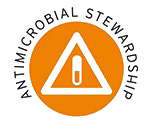Objective: According to a recent clinical trial, 82% of hard-to-heal wounds harbour levels of bacteria that impede healing. A follow-up analysis of trial data revealed that the use of antiseptic cleansers did not correlate with bacterial burden. At a minimum, these findings suggest the need for clinical research into the efficacy of antiseptics in reducing bacterial burden. Evidence supporting the bacterial killing ability of antiseptics is largely derived from preclinical and laboratory studies. Few clinical trials have examined bacterial levels and healing rates in hard-to-heal wounds. Fortunately, the advent of fluorescence imaging to detect bacterial burden has simplified the conduct of clinical research examining the effectiveness of antiseptics in the clinic setting. The aim of this study was to evaluate the efficacy of a modified sodium hypochlorite (NaOCl) solution in reducing wound size and bacterial load in hard-to-heal wounds. Method: In this randomised, double-blind pilot study, patients were randomised to one of two groups: daily wound cleansing with either normal saline solution (NSS) or NaOCl. Patients and investigators were blinded to the allocation. All wound types were included.
Results: A total of 16 patients consented to participate. At the initial visit, the target ulcer was measured and a fluorescence image (MolecuLight i:X) to evaluate bacterial load obtained. The wound was then cleansed with either NSS or NaOCl and fluorescence imaging repeated. Patients cleansed the wound daily in accordance with the randomisation schedule. They returned to the clinic weekly for four weeks, and on each visit the wound was measured and a fluorescence image captured. Patients receiving NaOCl had a greater percent reduction in wound area versus NSS; although the first phase of the study was not powered for statistical significance, there was a strong trend favouring NaOCl. In addition, there was greater bacterial reduction in the NaOCl group. Conclusion: Based on the results of this pilot study, enrolment has continued in order to increase the study’s power. This pilot study suggests that sodium hypochlorite is efficacious in reducing bacterial burden and promoting healing.

















